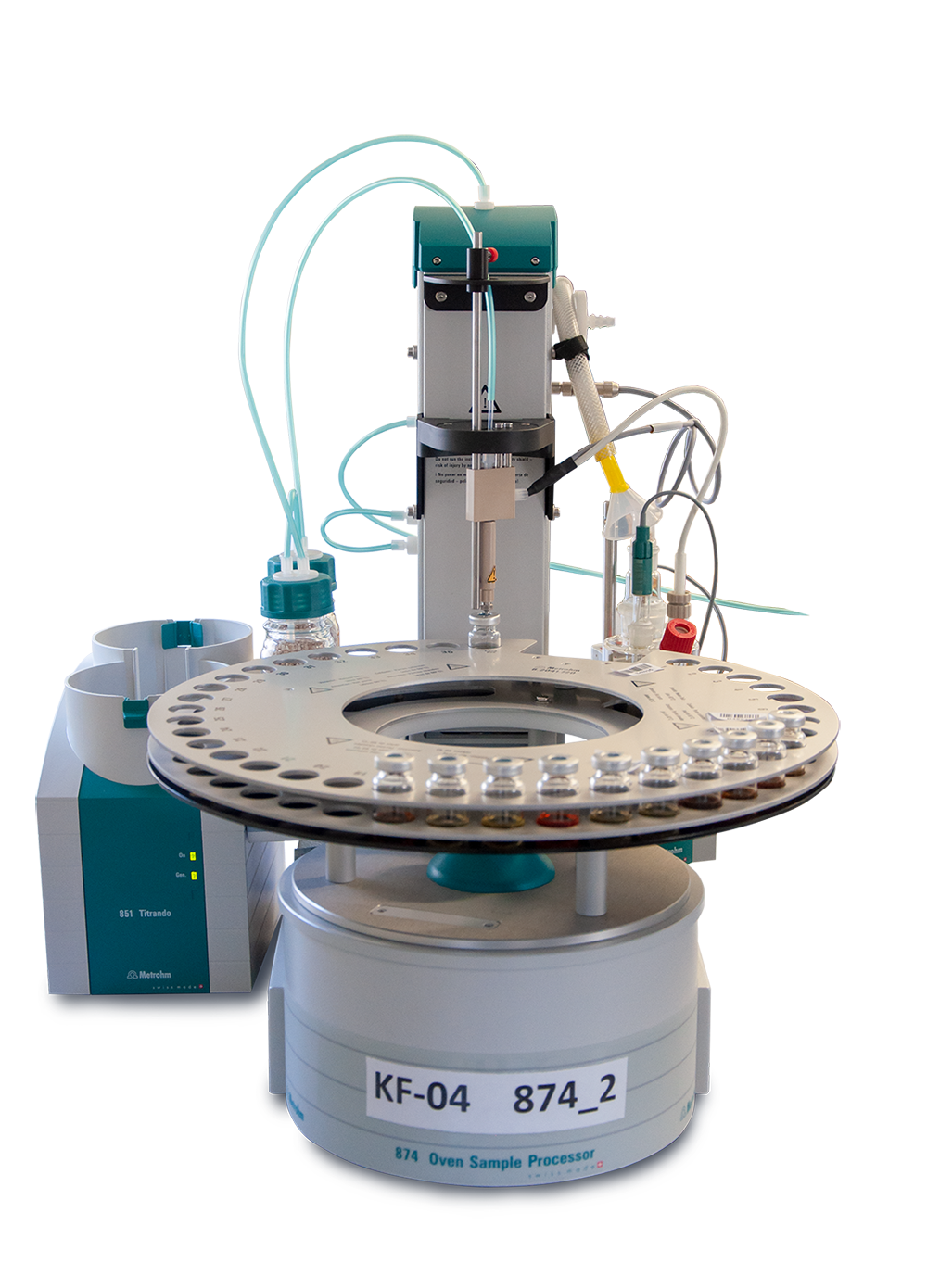Karl Fischer Titrator - Not a chance for water
Year of publication: 2000
In the OELCHECK laboratory, every lubricant sample is examined for its water content, because water is one of the most frequent contaminants with serious effects on the lubricant and the machine elements.
Since November 2000, OELCHECK has been using an innovative titrator to determine the water content. The titrator is based on an indirect testing method. It detects the water content of lubricant samples much faster and more accurately than titrators that determine the water directly in the sample volume.
The exact determination of water in lubricating or hydraulic oil is not a simple procedure. In lubricant technology, some substances, some of which are also dissolved in the oil, can only be determined by titration. Titration according to the Karl Fischer method (DIN 51777) is based on an electrochemical process. A reagent is contained in a measuring cell with two electrodes.
This so-called Karl Fischer reagent consists of several compounds that are in equilibrium with each other in the absence of water. If water is added, a reaction occurs that brings the system out of equilibrium. The equilibrium can be restored by an electrochemical reaction at the generator electrode. The water content can be calculated from the amount of current required for this reaction.
With the direct titration method used at OELCHECK until 2000, each oil sample had to be injected individually into the titration vessel, which was not only time-consuming but also drastically reduced the service life of the relatively expensive Karl Fischer solution in the case of contaminated used oils. Since oil types with special additives react with the Karl Fischer reagent and then provide an incorrect water value, a blank value often had to be taken into account.
The new Karl Fischer titrator from Metrohm uses an indirect method. The instrument consists of two parts, the actual Karl Fischer titrator and a sample changer with an integrated oven.
Approximately 2 g of the oil sample is poured into a glass vessel and sealed airtight with a septum. This glass vessel is placed on a turntable with space for 35 samples. The autosampler places the sample in an oven where it is heated to 140 °C - 180 °C. At the same time, the septum is pierced by a hollow needle. This passes dried nitrogen through the sample and then into the titration vessel. The heating causes the water present in the oil sample to be expelled in the form of water vapor. By this method, only the water vapor absorbed by the nitrogen stream is introduced into the titration vessel, thus avoiding side reactions caused by additives.
Fuel samples must be measured at a lower temperature than oil samples because of their lower boiling point. The newer method also makes it much easier to check the water content of grease samples.
The Karl Fischer titrator is equipped with an automatic sample changer and measures up to 30 samples per hour. It will thus be able to cope with the constantly increasing number of samples in the OELCHECK laboratory in the future.




